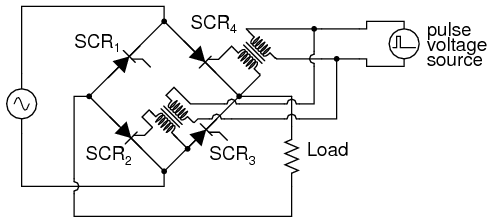Venkadesh_M
Advanced Member level 4
- Joined
- Jun 26, 2013
- Messages
- 1,374
- Helped
- 258
- Reputation
- 516
- Reaction score
- 254
- Trophy points
- 1,363
- Location
- Coimbatore, India
- Activity points
- 8,019
No sir , Our project need this negative as full as positive .. !!
I post the photo that require for output !
did you see it ?! here it is View attachment 82650
- - - Updated - - -
Our project depends on DC MOTOR on the load
- - - Updated - - -
Also , I don't get it form your design ,, when you put the same component in the upper 2 thyristors but in other hand of the lower 2 thyristor in completely different connection form the opto-coupler into thyristor !! 8-O
you can see from your design U2 & U4 are the same .. and U1 & U3 are the same but not the same for all of the thyristor ?!
why we just but the same material for the full bridge ..
Then this is not a at all rectifier............




